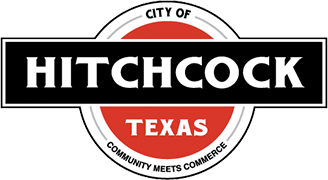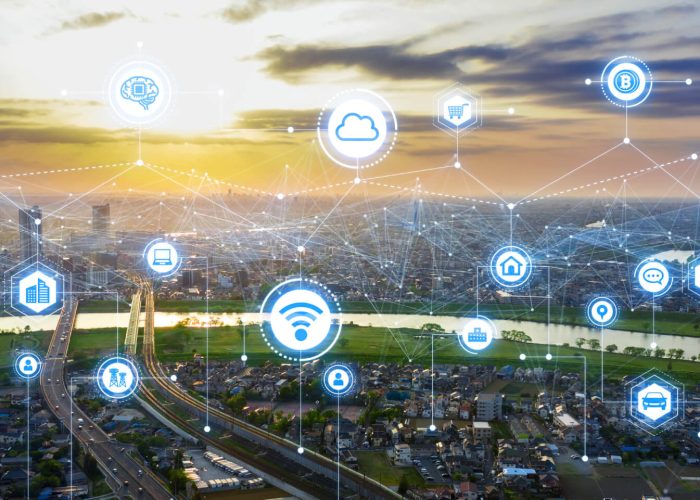Article Takeaways:
- Smart streetlights deliver immediate cost and energy savings through LED upgrades, dimming capabilities, and real-time controls.
- They create a scalable foundation for future smart city technologies, including community WiFi, traffic and pedestrian analytics, public safety systems, and environmental monitoring.
- Advanced sensors and AI integration enhance public safety by detecting unusual activity, identifying hazards, and enabling faster emergency response with real-time data.
- Multiple communication technologies allow flexibility so cities can choose a right-sized, reliable network that fits their infrastructure and long-term utility strategy.
- Smart lighting systems can often be installed without upfront capital when funded through an Energy Savings Performance Contract (ESPC).
- Successful implementation requires the right partner.
In an era of rapid urbanization and technological advancements, smart cities have emerged as a promising solution to address the challenges and demands of urban living. Smart streetlights are at the heart of this transformation, revolutionizing how cities illuminate their streets and enhance energy efficiency.
In this resource article, I’ll cover intelligent street lighting, including how it works, key features, benefits, and how it serves as an essential foundation for building a smart city. Most importantly, you will learn how to implement and develop plans for future capabilities utilizing city street lighting.
What are Smart Streetlights?
Smart streetlights, also known as intelligent or networked street lighting, are a technological advancement in urban infrastructure. These innovative lighting fixtures are equipped with sensors, wireless connectivity, and advanced technologies, enabling them to interact intelligently with their surroundings. These sensors can monitor a wide range of parameters, including air quality, noise levels, traffic flow, and pedestrian movement. With this data, city officials can make informed decisions to improve the overall efficiency and livability of the city.
Often integrated with the Internet of Things (IoT), smart street light systems can communicate with other devices and systems, creating a network of interconnected infrastructure. This connectivity enables them to respond dynamically to changing conditions, such as adjusting their brightness based on the presence of pedestrians or vehicles, optimizing energy consumption, and enhancing overall safety. City intelligent lights can monitor air quality, detect noise levels, and provide data on traffic patterns.
How Do Smart Streetlights Work?
Smart streetlights have numerous nodes, or sensors, to detect various data points. They can share this data with each other and a remote central control system via a wireless communication network. Examples of communication networks are detailed further on; however, radio frequency and cellular are the most popular. This data allows lighting to be monitored or adjusted in real-time according to various needs.
What are the Benefits of Smart Streetlights?
Smart streetlights offer a range of benefits that can significantly enhance our cities and communities.
Here are the key advantages of smart streetlights:
- Energy Efficiency: Smart streetlights use LED technology, which is more energy-efficient than traditional streetlights. They are also equipped with motion sensors and dimming capabilities, allowing them to adjust their brightness based on the presence of people or vehicles.
- Cost Savings: With the ability to dim or brighten based on real-time conditions, smart LED streetlights can optimize energy usage and reduce costs. They have a longer lifespan, reducing maintenance and replacement costs in the long run.
- Improved Safety: Smart public lighting can incorporate advanced technologies such as cameras, sensors, and sound detection systems. These features enable real-time monitoring of the surroundings, helping to detect potential safety risks or emergencies. This information can be shared with law enforcement agencies or emergency responders, allowing quicker response times and improved public safety.
- AI Integration: Artificial intelligence plays a foundational role in modern intelligent streetlight systems, both powering today’s advanced features and creating a scalable platform for future innovation. By integrating AI-enabled into streetlight technologies, communities can enhance safety, efficiency, and situational awareness. For example, AI-equipped cameras can quickly identify unusual patterns, such as multiple occupants rapidly exiting a building, which may signal an emerging threat. These real-time insights enable faster response times and strengthen public safety without additional strain on local resources.
- Traffic Management: Smart streetlighting can collect and analyze traffic patterns with sensors and data analytics integration. This information can optimize traffic flow, reduce congestion, and improve transportation efficiency.
- Environmental Sustainability: By reducing energy consumption and greenhouse gas emissions, smart city street lighting systems contribute to environmental sustainability goals. They can also use solar power solutions to power the lights, reducing carbon footprints.
- Smart City Integration: Smart streetlights are a foundational infrastructure for smart cities. They integrate with other smart devices and systems, such as waste management, parking, and public transportation, creating a connected ecosystem that improves overall urban functionality and quality of life.
- Increased Quality of Life: Well-lit streets contribute to a sense of security and comfort for residents and visitors, making cities more attractive and livable.
Related Reading: What are the benefits of LED lighting?
 What Types of Communications Technologies Do Smart Streetlights Use?
What Types of Communications Technologies Do Smart Streetlights Use?
These innovative lights are not only energy-efficient and cost-effective, but they also utilize advanced communication technologies to enhance their functionality.
Here are some of the types of communication technologies that smart connected streetlights use:
- Wireless Mesh Networks: Streetlights can form a mesh network, where each light acts as a node that can communicate with neighboring lights. This setup enables data to hop from one lamp to another, extending the coverage range without requiring each lamp to connect directly to a central hub.
- Cellular Networks: Smart lighting systems can use cellular networks (3G, 4G, or 5G) to communicate with a central management system. Cellular networks provide wide coverage and high data rates, making them ideal for transmitting real-time data and receiving commands.
- WiFi: Streetlights equipped with WiFi modules that can connect to local WiFi networks or create a hotspot, allowing for data exchange with nearby devices and central servers.
- Radio Frequency (RF): Using radio waves, these streetlights can communicate with each other and a central control system, creating a seamless network of intelligent lighting. This is one of the most common transmission methods and it usually works best for small networks.
- Powerline Communication (PLC): Some smart street lamps use powerline communication technology, which utilizes existing power lines for data transmission. Modulating the electrical signals on the power lines allows these lights to send and receive data without additional communication infrastructure. This makes powerline communication an efficient and cost-effective solution for streetlight networks.
- Narrowband IoT (NB-IoT): NB-IoT is a low-power, wide-area network technology specifically designed for IoT applications. Smart LED light technology can utilize NB-IoT to connect to a cellular network and transmit data over long distances. This enables them to communicate reliably and efficiently with other devices and systems, such as traffic management systems or emergency services.
- Satellite Communication: In remote or less connected areas, satellite communication allows streetlights to transmit data to a central server using satellite links.
- Fiber Optic Networks: In areas with high-speed internet infrastructure, fiber optic connections can establish fast and reliable communication between streetlighting and the central management system.
What Types of Sensors Can Be Connected to a Smart Streetlight?
Smart city light fixtures are equipped with a wide range of sensors to collect and analyze data in real-time, allowing for smarter and more responsive street light monitoring. Some of these sensors include:
- Motion Sensors: These sensors detect movement by only activating the streetlight when motion is detected, conserving energy when no motion is present.
- Light Sensors: Also known as photocells, these sensors measure ambient light and adjust the brightness accordingly, ensuring that they are not too bright during daylight hours and not too dim during the night.
- Environmental Sensors: These sensors can monitor air quality, temperature, humidity, CO2 and other environmental factors, providing valuable data for urban planning and improving the overall quality of life.
- Sound Sensors: These acoustic sensors can help identify and mitigate noise pollution in urban areas by detecting sound levels.
- Traffic Sensors: These sensors can monitor traffic flow, detect congestion, and provide data for optimizing traffic management and improving transportation systems.
- Surveillance Sensors: Equipped with cameras and other surveillance technologies, these sensors can enhance public safety by monitoring streets and detecting suspicious activities.
- Vibration Sensors: These sensors can monitor ground motions or earthquake activity, helping assess structural health and maintenance needs.
- Wireless Communication Modules: This enables connected public lighting to communicate with a central control system or other devices for data exchange.
- Emergency Call Buttons: Allows individuals to request assistance or report emergencies, enhancing safety in public spaces.
Are Smart Streetlights Right for Every City?
Acknowledging that these technological advancements may not be right for every city or town now is important. Some cities and towns may have unwilling utility providers that own the streetlight assets and want to maintain that control. Some may not require anything more than an LED streetlight upgrade. Regardless of the city or town, the benefits of LED streetlights are hard to argue.
It’s crucial to engage a partner knowledgeable about working with utilities and finding the right-sized solution for each city and town. For a no-obligation assessment, get in touch with us today!
Another aspect to consider is the investment required for implementing and maintaining these advanced lighting systems. Depending on the existing infrastructure or procurement model, they can be feasible for most cities. For instance, when incorporated into an energy savings performance contract (ESPC), these lights can be deployed without any initial capital expenditure. ESPCs are backed by performance guarantees to ensure they meet or exceed promised energy savings.
Decision-makers should exercise caution with low-bid procurement, as it may not yield the most favorable return on investment for the intended scope. It may seem more cost-effective upfront, but often, you get what you pay for, and the systems may not perform as intended.
How Do I Implement Smart Streetlights?
If intelligent streetlighting feels like a good fit for your community, choose a licensed provider with a proven track record in designing, installing, and integrating smart lighting systems. The right partner ensures your investment performs as intended and delivers long-term value.
Better yet, work with a design-builder. Design-builders are solely responsible for the project’s design and installation and serve as a one-stop shop for projects. Sole accountability means you can rest assured knowing you’re in good hands with one contract. Together, you can complete the following steps:
- Assessment and Planning
- Select Technology
- Prepare Infrastructure
- Install Sensor, Equipment, and Network
- Test and Optimize Control and Automation Sequencing
- Data Utilization
- Maintenance, Monitoring, and Continuous Improvement
The most important thing to remember when implementing smart streetlights and the technologies they’re capable of is that they are scalable. Starting with new LEDs and advanced lighting controls can create a foundation for future expansion into community WiFi, camera systems for traffic and pedestrian safety, and smart city integration. Advanced street lamps are a great way to create an immediate return on investment.
Depending on the region, streetlights are generally a great solution to decrease operating costs without creating additional maintenance costs.
How Do I Fund Smart Streetlights?
Funding smart streetlights requires careful consideration of various financing options and strategies. A few options include public-private partnerships, grants and subsidies, leasing agreements, or municipal bonds. However, network street lighting can also be installed as part of an energy savings performance contract without any upfront capital. This flexible funding alternative helps cities, towns, counties, and state governments use energy savings and avoid capital costs to pay for improvements. As a result, no up-front capital is required. Projects are financed and repaid with guaranteed energy and efficiency savings from the newly installed equipment.
Once the project is implemented, the qualified provider monitors utility bills and energy consumption monthly to ensure everything is running correctly and efficiency levels are reached. If the actual energy savings do not match the promised energy savings, the provider will pay the difference and make any changes needed. Any additional savings achieved from the project go directly to the building owner. So, cities and towns can be confident that smart street lighting will perform at or better than designed while setting the foundation for further smart city improvements.
Related Reading: Why should an alternative procurement process be considered for renovating government facilities?
Ultimately, the funding approach will depend on the city’s financial situation, goals, available resources, and the level of support from stakeholders. It’s essential to assess various options, evaluate the long-term financial implications, and choose a strategy that aligns with the city’s vision.
What is the Role of Smart Streetlights in Building a Smart City Infrastructure?
Networked streetlights are designed to be the foundational component of smart city management, as they create a framework for both narrowband and broadband communications. They act as a series of nodes within a larger networked infrastructure. As a result, smart streetlights interact and integrate with various smart devices, providing additional smart services to the public, such as WiFi or 5G networks.
Additionally, when integrated with smart transportation systems, streetlight technology can detect traffic congestion and automatically adjust signal timings to alleviate congestion. Furthermore, they can be synchronized with other smart city solutions to streamline operations and enhance efficiency.
Related Reading: Critical Components for Building the City of Tomorrow, Today
What are Some Examples of Smart Streetlights in Action?
Lighting
Smart streetlights can help in a variety of contexts. For example, when a person or vehicle approaches, the motion detection feature is triggered, and the sensor sends a signal to the streetlight to turn on or increase its brightness accordingly. Conversely, when no activity is detected, the sensor signals the streetlight to dim or turn off, thereby conserving energy and reducing light pollution. Other features include ambient light sensors that can adjust the brightness of the streetlight based on surrounding conditions.
Safety
Another example of how these intelligent streetlights can improve safety is their real-time ability to detect and respond to hazardous conditions. Equipped with sensors and cameras, these smart streetlights can identify potential dangers such as accidents, fires, or even criminal activities. Once a threat is detected, the streetlights can automatically adjust their brightness and color to alert pedestrians and drivers, drawing attention to the situation.
Additionally, smart LED streetlights can also connect with emergency services, providing them with valuable data and enabling faster response times.
City Decision-Making
All of the smart sensors can provide city officials with actionable insights. For example, traffic data may indicate that a particular intersection experiences heavy traffic during specific hours. City managers can adjust the timing of traffic lights to alleviate congestion.
Similarly, suppose air pollution levels are high in certain neighborhoods. In that case, city authorities can take targeted measures, such as planting more trees or implementing emission-reducing initiatives, to improve air quality. By harnessing the power of smart street lighting systems, cities are becoming more efficient and livable for their residents.
Next Steps
Connected streetlights pave the way toward a more sustainable future for urban environments. The possibilities for this technology and its integration potential are countless, but automated streetlights provide the perfect starting point for advancing city infrastructure. They can scale, integrate, and connect with various technologies, making them an invaluable resource for your city or town as it grows and desires to make smarter, data-driven decisions.
Contact us today to learn how your city or town can install smart streetlighting or transition to smarter technology. Our smart city experts and engineers are ready to answer your questions and design the right solutions.
Hear From Satisfied Clients.







